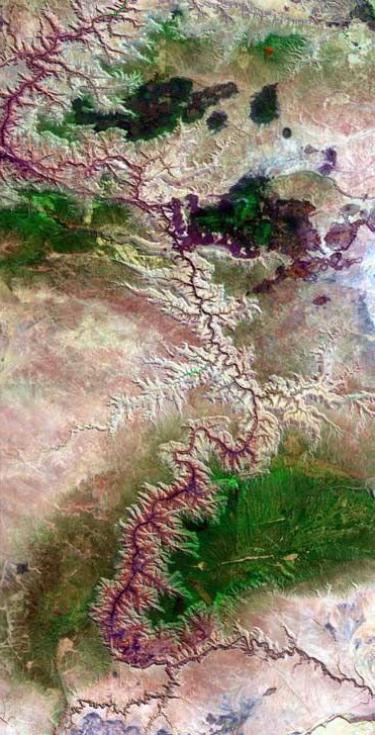Multidecadal Streamflow Projections

Funding Agency
Bureau of Reclamation
Research Team
- Solomon Tassew Erkyihun, PhD thesis
- Edie Zagona and Balaji Rajagopalan, principal investigators
- Ken Nowak and Jim Prairie, Bureau of Reclamation researchers
Effective water resources planning and management require skillful decisions on multiyear or decadal timeframes. In basins such as the Colorado River Basin (CRB), streamflow is not stationary but exhibits variability that reflects teleconnections with large-scale climate indices, such as Atlantic Multidecadal Oscillation (AMO) and Pacific Decadal Oscillation (PDO). This research addresses this problem with four main contributions:
- Develops a stochastic streamflow simulation model and decadal-scale streamflow projections based on these climate indices
- Compares this with other models recently developed
- Identifies and quantifies periods of unpredictability
- Demonstrates the value of adding decadal-scale projections to existing decision criteria in the CRB Supply and Demand Study (“Basin Study”)
The novel weighted K-nearest neighbor (WKNN) model identifies and reconstructs dominant signals in the AMO and PDO using wavelet analysis, simulates each using block K-nearest neighbor (K-NN) bootstrap, then simulates the streamflow using a K-NN bootstrap conditioned on the simulated climate forcings. Traditional methods develop similar models on the flow time series and have limited skill in projections. Here, the climate indices are modeled and streamflow generated conditionally, exploiting the skill in climate indices. Our WKNN model is compared with other recently developed methods–Conditional Hidden Markov Model and the enhanced wavelet autoregressive model–with respect to skill of projections over a range of lead times.
To understand and quantify the time-varying predictability of streamflow, we recover the underlying dynamics using a nonlinear dynamical system-based approach. Time varying predictability is assessed by quantifying the divergence of trajectories in the phase space with time using Local Lyapunov Exponents LLE). Ensembles of projections from a current time are generated by block resampling trajectories from the K-nearest neighbors of the current vector in the phase space.
Decadal-scale WKNN projections and time varying predictabilities indicated by LLE are demonstrated to enhance existing decision criteria in the CRB Study that identify system vulnerability and invoke options and strategies to increase water availability or reduce demand through conservation or efficiency. Based on projections being wet, dry or unpredictable, improved decisions may reduce cost or reduce shortage and are illustrated by tradeoff curves of a risk of shortage versus cost.
This research was published in Solomon Erkyihun's PhD Dissertation (2015) and Erkyihun, S.E., B. Rajagopalan, E. Zagona, U. Lall, and K. Nowak (2016), “Wavelet-based Time Series Bootstrap Model for Multidecadal Streamflow Simulation Using Climate Indicators,” Water Resources Research, 52, 4061–4077, doi:10.1002/2016WR018696.
Erkyihun, S., E. Zagona and B. Rajagopalan, “Wavelet and Hidden Markov Based Stochastic Simulation Methods Comparison on Colorado River Streamflow,” ASCE Journal of Hydrologic Engineering, accepted.

